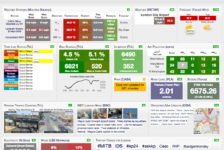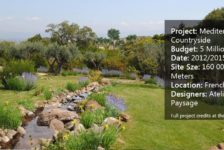The official launch of the LEED for Neighborhood Development (LEED-ND) Rating System was on April 29, 2010. The US Green Building Council (USGBC) is the first national organization to regulate neighborhood design by focusing on smart growth and eco-friendly building principles. The LEED for Neighborhood Development Certification awards a stamp of approval for developmental design and location choices that meet the high standards of sustainable development and environmental responsibility in urban building practices.
USGBC has partnered with the Congress for New Urbanism and the Natural Resources Defense Council to launch the LEED-ND Rating System, which aims to reduce the negative environmental impacts associated with urban sprawl. Urban sprawl is the spreading outwards of a city and its suburbs to the outskirts where people become highly dependent on automobiles for transportation to basic services. The LEED-ND Rating System has identified building standards that will promote land conservation and transportation efficiency to reduce the depletion of natural resources and overall greenhouse gas emissions.
The importance of developing this rating system became apparent after the results of The Economic Value of Walkability study were published in 2008; this study revealed that households in automobile-dependent communities spend 50% more, at roughly $8,500 per year, on their regular mode of transportation. This, combined with information from other similar studies, encouraged the USGBC to begin focusing on creating a LEED rating system that champions sustainable urban development to encourage building near existing communities and public transportation to reduce urban sprawl and provide alternative transportation options. Overall, these options decrease automobile dependence while also promoting a healthy community that chooses to walk, bike, or use other forms of transportation, besides automobiles, to carryout their daily activities.
One of the greatest benefits of the LEED Neighborhood Development Rating System when compared to other rating systems available through LEED is that it offers three different stages of certification:
• Stage I: A successful building project plan will be awarded LEED conditional approval.
• Stage II: An approved project plan becomes a pre-certified LEED for Neighborhood Development plan.
• Stage III: A project will earn certification and become officially LEED Certified after submitting
the necessary documentation that proves all certification requirements have been actualized.
This intricate process provides an opportunity wherein a building project can be marketed as a pre-approved LEED for Neighborhood Development Certified project in order to attract investors early in the design process. The USGBC has also developed the LEED for Neighborhood Development Accredited Professional (LEED AP: Neighborhood Development) credential in order to identify building professionals who have achieved a high level of skill and knowledge regarding sustainable neighborhood development.
In order to become an official LEED AP in Neighborhood Development, a person must pass two professional exams: the LEED Green Associate exam and the LEED Accredited Professional in Neighborhood Development exam. When a person passes the LEED Green Associate exam, they receive the LEED Green Associate credential and are then able to advance to the next step and begin preparing for the LEED Accredited Professional in Neighborhood Development exam.
There are LEED training options available in the marketplace, including online LEED exam prep courses and practice tests. Planet Principles is a company that provides online LEED training and is a great option because it has a free Introduction to LEED online course to get you started on preparing for the LEED exam. However, the best way to prepare for the exam will vary for each individual based on a person’s experience in the building industry, or a person’s individual study preferences, so take the time to review your options and decide the best path for your career goals.
Published in Blog









